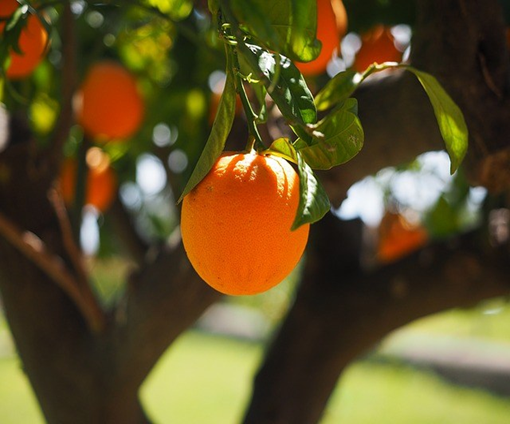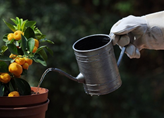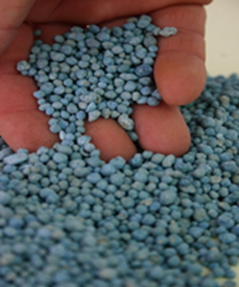WEDNESDAY: AGRICULTURE AND ITS ORANGES

Orange is a citrus fruit that besides having a very pleasant smell is juicy and has many beneficial properties for health. This fruit is very versatile since it can be consumed in many ways without losing its properties and delicious taste; with it you can make desserts, juices, salads, among other dishes. This fruit is known worldwide both for its flavor and for its contributions to health; It is composed of a delicious and juicy pulp that contains a lot of vitamin C.
In this post I will talk about how to plant oranges, its scientific name is Citrus sinensis or Citrus aurantium. Orange trees depend on some basic care to keep it healthy and thus increase the production of this fruit.

WHEN TO SOW ORANGES
It is important that to grow an orange tree, it must be sown during the rainiest season of the year. The ideal temperature for orange cultivation ranges from 23 to 32 ° C, however, its resistance to low temperatures will depend on the type of crop. We must bear in mind that the orange plant is not suitable for warm regions, with temperatures above 32 ° C, although if you have a controlled irrigation can solve this problem.
SOIL TO PLANT AN ORANGE
The orange tree usually grows very well in several types of soil, however, it grows best in sandy and clayey soils with a pH between 6.0 to 6.5. The orange plant should be sown with depth, if you get to see excess acidity in the soil, you can apply calcium carbonate and magnesium (limestone).
IRRIGATION
He water needed for the growth of orange trees varies by climate and annual total rainfall, but as a general rule, their care involves regular watering in the spring to prevent them from wilting and suspending irrigation in the fall. Remember that water reduces the solids content of the fruit. The depth of planting also affects the amount of water it provides during the care of orange trees. Growing this tree usually needs between 1 and 1½ inches of water per week.

If it is the first time you are going to plant an orange tree, you can start from the seeds of the orange, and however, it is more common to use trees that have been previously grafted.
The trees grown from the seeds have a short shelf life, since they are susceptible to roots and stems rotting and in case the trees manage to grow, they will not produce fruit until maturity, and this process could take up to 15 years.
As a consequence of this fact the seedlings are the most used, introducing the graft inside the stem so that they tolerate adverse growth conditions. The fruit is produced from the barb and develops more quickly in grafted trees compared to trees that grow from orange seeds. The grafts can be obtained in the places where the oranges grow, being the local nurseries the best place to buy a grafted tree. It should leave between each plant 4 meters and between each furrow 6 meters.

If you are under the care of an orange tree that is already established, the following is recommended:
FERTILIZATION
Fertilization depends very much on the use that will be given to the fruit, since putting fertilizers with more nitrogen provides more oil to the skin, while those with potassium reduces the oil in the skin. For a high productivity of oranges for edible use, 1 to 2 pounds of nitrogen are needed, which should be applied once a year for each tree. The fertilizer should include potassium and phosphorus, as well as a series of micro-nutrients.
If the orange tree does not produce fruit in abundance, a test of the soil in the area where the orange trees grow should be taken to determine what proportion of fertilizer is needed. Additional fertilization is often applied by spraying the leaves of the tree once or twice a year.
PRUNING
The pruning of the orange tree is not necessary. However, you must remove the branches that are a foot or less from the ground. In addition, damaged or dried branches should be removed.

For more information visit:
https://clubdejardineria.homedepot.com.mx/article/planta-un-arbol-frutal-en-tu-propio-jardin
https://mejorconsalud.com/11-usos-y-beneficios-de-la-naranja-que-posiblemente-no-conocias/
The images between paragraphs and the initial image are from my authority, created with the power point program especially for @steemchurch @farms

If you got here ... Infinite thanks for reading me.
"God bless you and protect you"







Congratulations @daribel! You have completed some achievement on Steemit and have been rewarded with new badge(s) :
Click on the badge to view your Board of Honor.
If you no longer want to receive notifications, reply to this comment with the word
STOPTo support your work, I also upvoted your post!
Do not miss the last post from @steemitboard!
Participate in the SteemitBoard World Cup Contest!
Collect World Cup badges and win free SBD
Support the Gold Sponsors of the contest: @lukestokes
Greetings ... I do not speak English and I am using a translator. I liked your article. I live in a tropical country, I like orange juice very much. My congratulations for the information. @miomarp (40)